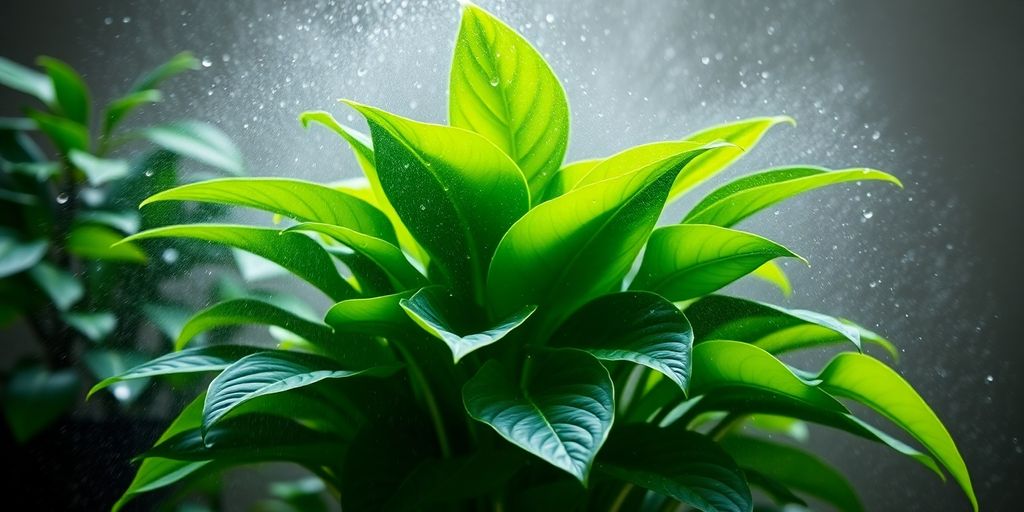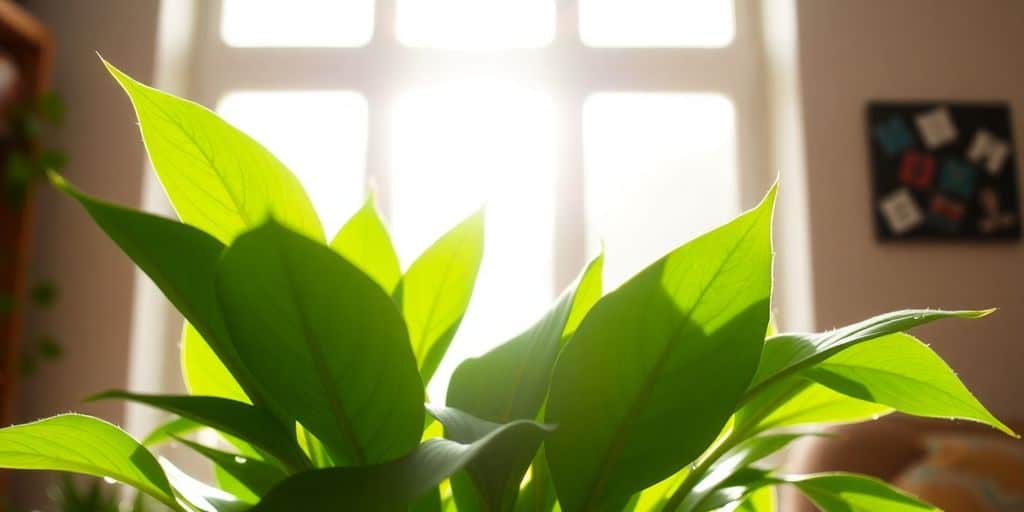Tips to keep indoor plants moisturized in dry environments are crucial for maintaining healthy and vibrant greenery. Dry air can quickly sap moisture from your plants, making it essential to adopt the right care techniques. Understanding these simple strategies can make all the difference.
Indoor plants add beauty and freshness to any space, but they often struggle in low-humidity conditions. By learning how to properly hydrate and protect them, you ensure they thrive even in challenging environments. Small changes in your routine can lead to big improvements.
This article will guide you through effective and easy-to-follow tips to maintain moisture levels for your indoor plants. From watering methods to humidity boosters, you’ll find practical advice to keep your plants happy. Keep reading to help your greenery flourish indoors.
Key takeaways
- Group your plants together to create a mini humid environment.
- Use pebble trays filled with water to boost humidity around your plants.
- Consider placing your plants in naturally humid areas of your home, like the bathroom.
Understanding humidity needs for indoor plants
Why humidity is crucial for plant health
Okay, so, humidity. It’s not just about making your hair frizzy, it’s super important for your green buddies too. Think of it like this: many of our favorite houseplants come from rainforests or other humid spots. When we drag ‘em inside, especially during the winter when the heater’s blasting, the air gets dry.
And that’s when they start to suffer. If the humidity is too low, your plants can’t properly absorb the water they need, even if you’re watering them like clockwork. It’s like trying to drink through a straw with a hole in it – frustrating, right?
Signs your plants need more humidity
How do you know if your plants are thirsty for humidity? Well, they’ll tell you, in their own leafy way. Keep an eye out for these telltale signs:
- Brown, crispy leaf edges: This is usually the first sign. It’s like they’re getting sunburned, but from the inside out.
- Drooping leaves: Nobody likes a droopy plant. It’s a sign they’re not feeling their best.
- Yellowing leaves: This can indicate a bunch of problems, but low humidity is a common culprit.
- Stunted growth: If your plant seems to have stopped growing, even though it’s getting enough light and water, humidity might be the issue.
I remember when my poor fern started looking like a desert landscape. That’s when I knew I had to up my humidity game, pronto!
Effective methods to boost humidity

Okay, so your plants are lookin’ a little parched, huh? Don’t sweat it, there are a bunch of ways to get that humidity up without turning your place into a swamp. I’ve tried a few of these myself, and lemme tell ya, some are way easier than others.
Using pebble trays for moisture
This is a classic trick, and it’s pretty simple. Basically, you grab a tray – anything shallow will do – and fill it with pebbles. Then, you add water until it almost covers the pebbles, but not quite. You don’t want your plant’s pot sitting directly in the water, or you’ll end up with root rot.
The idea is that as the water evaporates, it creates a little humid microclimate around your plant. It’s like a mini-spa day for your leafy friends. I’ve found it works best for plants that are already doing okay, just need a little boost. It’s not gonna save a plant that’s already on its last legs, if you catch my drift.
Incorporating a humidifier into your space
Alright, if you’re serious about humidity, a humidifier is the way to go. It’s definitely more of an investment than a pebble tray, but it can make a huge difference, especially in the winter when the heat’s cranked up and everything’s dry as a bone.
There are tons of different types out there, from small ones that are good for a single room to big ones that can handle the whole house. I’d say, think about how many plants you have and how big the space is where they live.
Also, keep in mind that humidifiers need to be cleaned regularly, or they can get kinda gross. Nobody wants to breathe in mold spores, right? I usually give mine a good scrub every couple of weeks, just to be on the safe side.
Best practices for plant placement

Grouping plants for increased humidity
Okay, so, I’ve found that grouping my plants together is like throwing a little plant party – and they actually seem to dig it! When you cluster plants, they create a microclimate where humidity hangs out a bit more.
It’s all about that evapotranspiration thing, where they release moisture, and when they’re close, they share the love. Plus, it just looks nicer, right? Like a mini jungle in your living room. I usually arrange mine based on their light needs, so everyone’s happy.
Identifying the most humid areas in your home
Alright, so before you start moving plants around, take a sec to figure out which spots in your house are already winning the humidity game. Bathrooms are usually a safe bet, especially if you’ve got a window in there.
Kitchens can also be surprisingly humid, especially when you’re cooking up a storm. I even use a cheap humidity monitor I snagged online to get a better idea. Knowing where the naturally humid spots are can save you a lot of effort – and keep your plants thriving without too much fuss.
Wrapping it up
So, keeping your indoor plants happy in dry conditions doesn’t have to be a hassle. Just remember to group them together, use pebble trays, and maybe even mist them now and then. If you can, invest in a humidifier—it can really make a difference. And don’t forget to check on your plants regularly.
If their leaves start looking crispy or brown, it’s a sign they need more moisture. With a little effort, you can create a cozy environment for your plants, and they’ll reward you with lush growth and beauty. Happy planting!
Frequently asked questions
Why is humidity imporant for indoor plants?
Humidity is really important for indoor plants because many of them come from tropical areas where it’s naturally humid. If the air is too dry, their leaves can get brown edges, droop, or even die.
How can I tell if my plants need more humidity?
You can tell if your plants need more humidity if their leaves start to turn brown at the tips, droop, or feel crispy. If you notice these signs, it’s time to help them out!
What are some easy ways to increase humidity for my plants?
Some simple ways to boost humidity include grouping your plants together, using pebble trays with water, or even getting a humidifier for your room.
